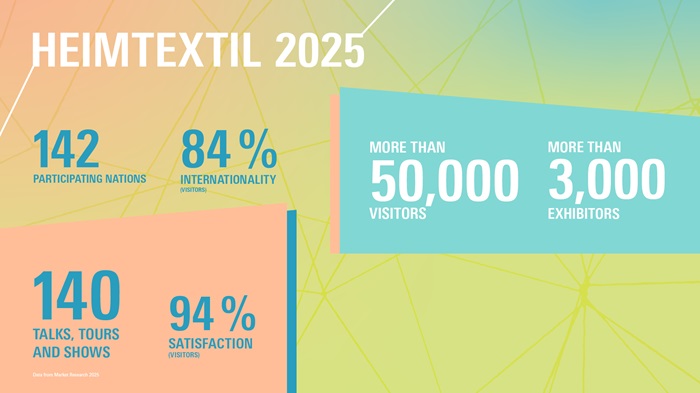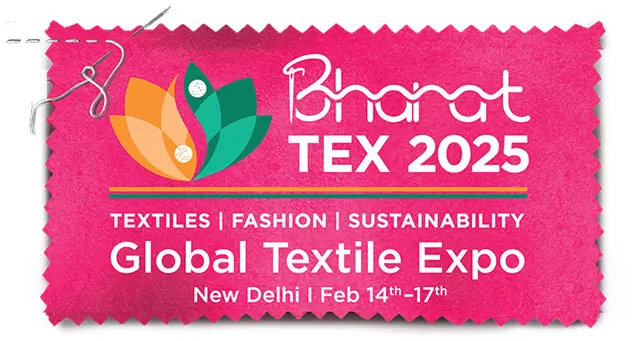
The Regional Comprehensive Economic Partnership (RCEP) has been in effect for over two years, and its impact on the textile and apparel industry is becoming increasingly clear. The free trade agreement, covering 15 Asia-Pacific nations, has significantly altered trade flows in the sector, creating opportunities and challenges for businesses across the region. RCEP, which includes major textile producers and consumers like China, Japan, South Korea, and the ASEAN countries, has streamlined trade processes and reduced tariffs. This has led to a boost in intra-RCEP textile and apparel trade, reshaping supply chains and influencing investment decisions.
China’s dominance and ASEAN’s influence
China has emerged as a dominant player within RCEP, leveraging its massive production capacity and competitive pricing to capture a significant share of the intra-bloc market, particularly in yarns and fabrics. Meanwhile, ASEAN countries, with their lower labor costs and growing manufacturing capabilities, are attracting increased investment and becoming key players in the apparel segment, particularly in finished garments.
RCEP is also encouraging companies to source inputs and intermediate goods from within the bloc, leading to a strengthening of regional supply chains. What’s more, the agreement is fostering innovation and competition, pushing companies to upgrade their technologies and improve product quality to stay ahead.
Table: Intra-RCEP textile and apparel trade (2022)
|
Country |
Exports ($bn) |
Imports($bn) |
Major export products |
Major import products |
|
China |
95.02 |
23.45 |
Yarns, fabrics, finished apparel |
Raw cotton, specialized textiles |
|
Vietnam |
44.2 |
28.7 |
Apparel, footwear |
Fabrics, yarns |
|
South Korea |
15.6 |
12.3 |
Synthetic fabrics, technical textiles |
Apparel, raw materials |
|
Japan |
10.8 |
18.5 |
Specialized textiles, high-performance apparel |
Apparel, home textiles |
|
ASEAN (total) |
120.3 |
85.6 |
Apparel, footwear, home textiles |
Fabrics, yarns, raw materials |
|
Australia |
2.1 |
8.9 |
Wool, raw materials |
Apparel, home textiles |
|
New Zealand |
1.5 |
3.2 |
Wool, natural fibers |
Apparel, home textiles |
Note: This table is based on available data from various sources and may not be fully comprehensive.
Product-wise China leads, Vietnam makes a mark
Fibers: Raw cotton remains a significant import for many RCEP countries, with Australia and New Zealand emerging as key suppliers. Synthetic fibers are largely traded within the bloc, with South Korea and China being major exporters.
Table: Top traded textile and apparel Products within RCEP (2022)
|
Product Category |
Estimated trade value ($bn) |
Major exporters |
Major importers |
|
Apparel |
180 |
China, Vietnam, Bangladesh, Cambodia |
Japan, Australia, New Zealand, South Korea |
|
Yarns |
60 |
China, India, Vietnam |
Cambodia, Laos, Myanmar |
|
Fabrics |
85 |
China, South Korea, Taiwan |
Vietnam, Thailand, Indonesia |
|
Raw Cotton |
20 |
Australia, India, United States (outside RCEP) |
China, Vietnam, Bangladesh |
|
Synthetic Fibers |
35 |
South Korea, China, Japan |
Vietnam, Thailand, Indonesia |
Yarns: China dominates yarn exports within RCEP, supplying a wide range of yarns to other member countries for use in apparel and textile production. The reliance on raw cotton imports, particularly from outside RCEP (like the US), indicates a potential vulnerability for the bloc. This highlights the need for diversification of sourcing and increased production of raw materials within RCEP. The significant trade in synthetic fibers reflects the growing demand for these materials in various applications, from apparel to industrial uses.
Fabrics: A wide variety of fabrics are traded within RCEP, with China and South Korea exporting higher-value synthetic and specialized fabrics, while ASEAN countries focus on cotton and blended fabrics.
Apparel: Apparel constitutes the largest share of intra-RCEP trade in the textile and apparel sector. This highlights the significant role of RCEP in facilitating the flow of garments within the region. Trade is dominated by China and ASEAN countries, with Vietnam and Bangladesh emerging as major garment exporters.
In fact, the data suggests that China and Vietnam have emerged as major beneficiaries of RCEP in the textile and apparel sector. China's dominance in yarn and fabric production, coupled with Vietnam's rising apparel manufacturing prowess, has allowed them to capitalize on the increased market access and reduced tariffs within the bloc. This has led to concerns that other RCEP members, particularly those with less developed textile industries, may struggle to compete.
Table: Estimated Intra-RCEP Textile and Apparel Trade (2023 and 2024)
|
Country |
Exports ($bn) |
Imports ($ bn) |
Major export products |
Major import products |
|
China |
||||
|
2023 |
102.0 (est.) |
25.0 (est.) |
Yarns, fabrics, finished apparel |
Raw cotton, specialized textiles |
|
2024 |
108.0 (est.) |
26.5 (est.) |
Yarns, fabrics, finished apparel |
Raw cotton, specialized textiles |
|
Vietnam |
||||
|
2023 |
48.0 (est.) |
31.0 (est.) |
Apparel, footwear |
Fabrics, yarns |
|
2024 |
52.0 (est.) |
33.5 (est.) |
Apparel, footwear |
Fabrics, yarns |
|
South Korea |
||||
|
2023 |
16.5 (est.) |
13.0 (est.) |
Synthetic fabrics, technical textiles |
Apparel, raw materials |
|
2024 |
17.5 (est.) |
13.8 (est.) |
Synthetic fabrics, technical textiles |
Apparel, raw materials |
|
Japan |
||||
|
2023 |
11.5 (est.) |
20.0 (est.) |
Specialized textiles, high-performance apparel |
Apparel, home textiles |
|
2024 |
12.0 (est.) |
21.5 (est.) |
Specialized textiles, high-performance apparel |
Apparel, home textiles |
|
ASEAN (total) |
||||
|
2023 |
130.0 (est.) |
92.0 (est.) |
Apparel, footwear, home textiles |
Fabrics, yarns, raw materials |
|
2024 |
140.0 (est.) |
98.0 (est.) |
Apparel, footwear, home textiles |
Fabrics, yarns, raw materials |
|
Australia |
||||
|
2023 |
2.3 (est.) |
9.5 (est.) |
Wool, raw materials |
Apparel, home textiles |
|
2024 |
2.5 (est.) |
10.0 (est.) |
Wool, raw materials |
Apparel, home textiles |
|
New Zealand |
||||
|
2023 |
1.6 (est.) |
3.5 (est.) |
Wool, natural fibers |
Apparel, home textiles |
|
2024 |
1.7 (est.) |
3.8 (est.) |
Wool, natural fibers |
Apparel, home textiles |
This table based on preliminary data, industry reports, observed in 2022 shows some clear trends.
Continued growth: Intra-RCEP textile and apparel trade continued growing in 2023 and 2024, driven by ongoing tariff reductions and increasing regional integration.
China's steady dominance: China maintained its dominant position in the bloc, with exports continuing to outpace imports.
ASEAN's expansion: ASEAN countries further expanded their role in apparel production and exports, capitalizing on their competitive labor costs and growing manufacturing base.
Supply chain resilience: The COVID-19 pandemic and geopolitical tensions highlighted the importance of resilient supply chains. RCEP is likely to have encouraged further diversification and regionalization of supply chains within the textile and apparel sector.
Sustainability concerns: Increasingly, consumers and governments are demanding greater sustainability in the textile and apparel industry. This trend is likely to have influenced sourcing decisions and production practices within RCEP.
India's decision, a missed opportunity?
India, a significant textile and apparel producer, opted out of RCEP in 2019 due to concerns about potential flooding of its market by cheaper Chinese goods. While this decision may have protected some domestic industries in the short term, it has also raised questions about whether India is missing out on the potential benefits of increased regional trade and integration. Some analysts argue that India could have leveraged its strengths in cotton production and skilled labor to become a major player in the RCEP market.
RCEP is still in its early stages, and its full impact on the textile and apparel industry will unfold over time. However, it is clear that the agreement is reshaping the regional landscape, creating a more integrated and dynamic market. Businesses that can adapt to these changes and leverage the opportunities presented by RCEP are well-positioned for success in this evolving market.










